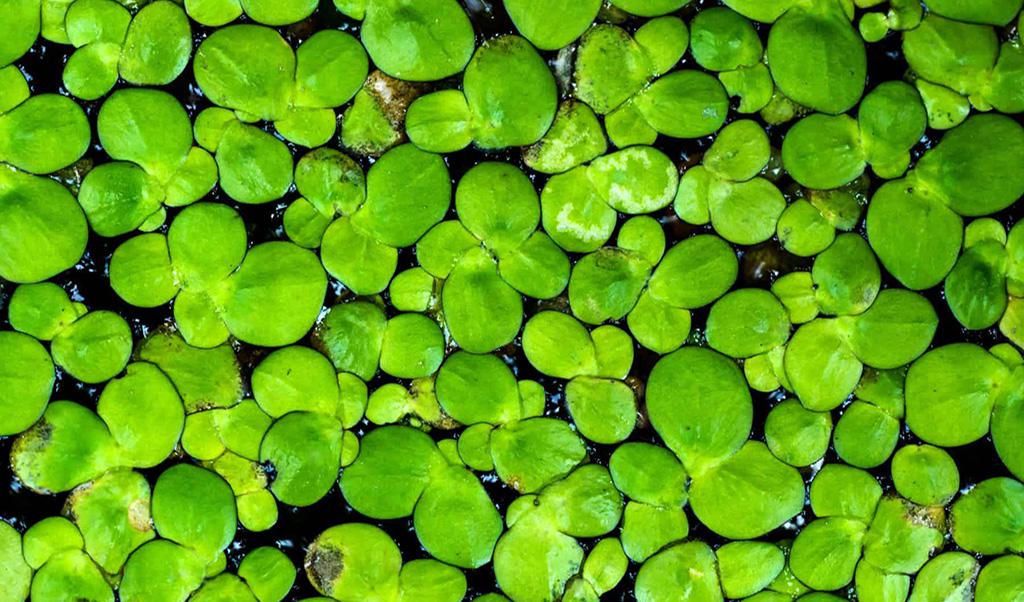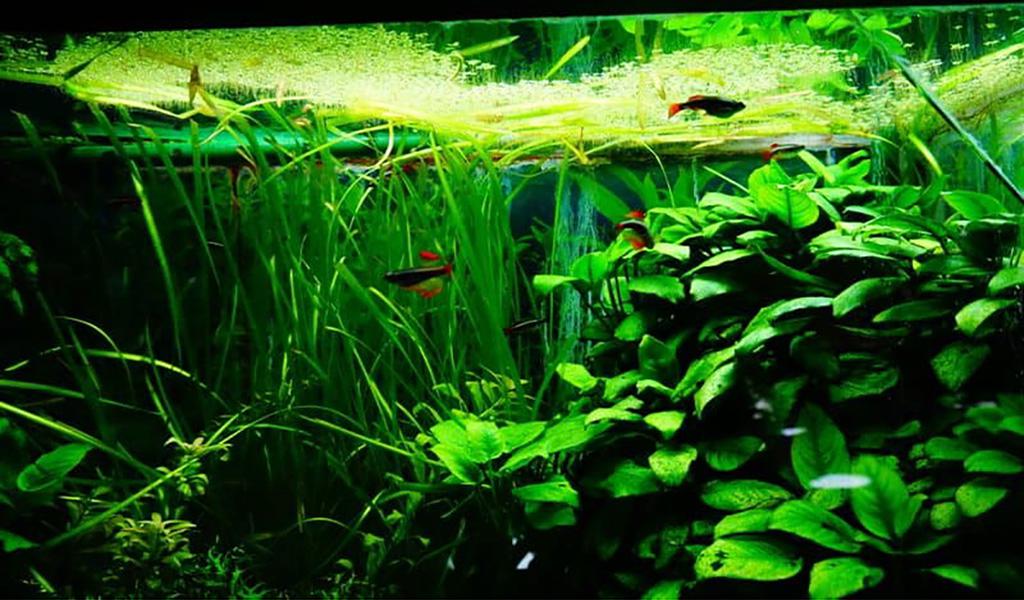The Ultimate Guide to Controlling Duckweed in Your Aquarium
Duckweed, a fast-growing floating plant, can be a double-edged sword in aquariums. On one hand, it’s excellent at absorbing excess nutrients and providing shade for your fish. On the other hand, it can quickly take over your tank, blocking light and creating challenges for maintenance. For those dealing with a duckweed infestation, the good news is that there are several effective ways to control it without completely removing its benefits.
In this blog, we’ll explore why duckweed can become a problem, and more importantly, how you can manage it to keep your tank healthy and balanced.
Why Duckweed Can Be a Problem in Aquariums
Duckweed reproduces incredibly fast. Under the right conditions, it can double its population in just a few days. This rapid growth can quickly cover the surface of your aquarium, blocking light from reaching the plants below, and creating low oxygen levels in the tank at night when the plants switch to oxygen consumption.
If left unchecked, duckweed can:
- Block Light: Without enough light, submerged plants in the tank may start to die off, which can affect your aquarium's ecosystem.
- Reduce Oxygen Levels: While plants produce oxygen during the day, at night they can consume it, which can lower the oxygen available for fish.
- Clog Filters: Duckweed can get sucked into filters, leading to clogs and reduced filtration efficiency.
-
Aesthetic Issues: A thick layer of duckweed may make it hard to see your fish, reducing the visual appeal of your aquarium.

So, how do you keep duckweed in check without eliminating it altogether?
1. Manual Removal: Regular Skimming
One of the simplest ways to control duckweed is through manual removal. While it might seem tedious, regularly skimming the surface of your aquarium with a fine net can significantly reduce duckweed growth. Since duckweed can reproduce rapidly, it’s important to do this at least once or twice a week, depending on the size of your tank and the extent of the duckweed.
Pro Tip: Try removing around 80-90% of the duckweed each time, leaving some for nutrient absorption and shade. This approach helps maintain balance without letting it overrun the tank.
2. Control Nutrient Levels
Duckweed thrives on excess nutrients, particularly nitrates and phosphates. If your aquarium has high nutrient levels, duckweed will grow quickly. One way to limit its growth is by controlling the nutrient levels in the water. Here’s how:
- Limit Feeding: Overfeeding your fish leads to excess waste and leftover food, which decompose into nutrients that duckweed loves. Feed your fish only what they can consume within a few minutes.
- Water Changes: Perform regular water changes (20-30% every week) to remove excess nutrients from the water. This not only benefits your fish but also keeps the duckweed from exploding in growth.
- Chemical Filtration: You can add phosphate-removing media to your filter to reduce the amount of phosphate in the water, making the environment less ideal for duckweed to thrive.
3. Increase Water Movement
Duckweed prefers still water or areas with little water flow. To combat this, you can increase surface agitation or water movement in your aquarium. Here are a few ways to do this:
- Add an Air Stone: An air stone can increase surface agitation, which makes it harder for duckweed to remain in one place and reproduce. Plus, it also helps oxygenate the water for your fish.
-
Install a Powerhead or Spray Bar: By adding a powerhead or adjusting your filter’s spray bar, you can direct more water movement to the surface, disrupting the duckweed’s growth.

4. Introduce Duckweed-Eating Fish
Certain species of fish can help naturally control duckweed by consuming it. Some of the best duckweed-eating fish include:
- Goldfish: Goldfish are voracious eaters and will happily snack on duckweed. However, be mindful that goldfish are large and produce a lot of waste, so they may not be suitable for all tank setups.
- Koi: In outdoor ponds or large tanks, koi can help keep duckweed in check, though they also require a lot of space.
- Siamese Algae Eaters: While not primarily duckweed eaters, they will nibble on small plants, including duckweed, especially if they don’t have other food sources.
- Tilapia: For larger, more aggressive setups, tilapia can be introduced to control plant overgrowth, including duckweed.
While introducing fish can be effective, it’s essential to ensure that they’re compatible with the other species in your tank.
5. Use Floating Plant Barriers
If you want to keep some duckweed for its benefits (such as nutrient absorption and shade), but don’t want it covering your entire tank, you can use floating plant barriers. These barriers section off areas of your tank, limiting where the duckweed can spread.
You can make a DIY barrier using:
- Airline tubing: Create a floating ring on the surface of your tank to contain the duckweed to one area.
-
Plastic rings: Some hobbyists use plastic rings or DIY frames to corral duckweed in one section, making it easier to control and maintain.

6. Competing Plants
Introducing competing plants into your aquarium can help reduce duckweed's growth by absorbing the same nutrients duckweed relies on. Some excellent fast-growing plants include:
- Water Lettuce: A floating plant that competes with duckweed for nutrients but is much easier to control.
- Hornwort: A fast-growing submerged plant that absorbs excess nutrients, reducing the resources available for duckweed.
- Water Sprite: Another fast-growing plant that can outcompete duckweed in terms of nutrient uptake.
By adding these plants, you create a more diverse ecosystem that limits duckweed growth naturally.
7. Chemical Control (As a Last Resort)
If all else fails, you can use chemical treatments designed to kill floating plants like duckweed. However, this method should only be used as a last resort, as it can affect other plants and fish in the aquarium. Some algaecides or plant control chemicals will harm your tank’s ecosystem, so use them sparingly and follow the manufacturer’s instructions carefully.
Conclusion
Duckweed can be both a blessing and a curse in aquariums. While it helps absorb excess nutrients and provides shade, it can quickly overrun your tank if left unchecked. By manually removing it, controlling nutrients, increasing water flow, introducing duckweed-eating fish, and using barriers or competing plants, you can maintain a balanced ecosystem without letting duckweed take over.
With consistent effort, duckweed can become a beneficial and controlled part of your aquarium setup, enhancing the health of your tank rather than overwhelming it.












































































































